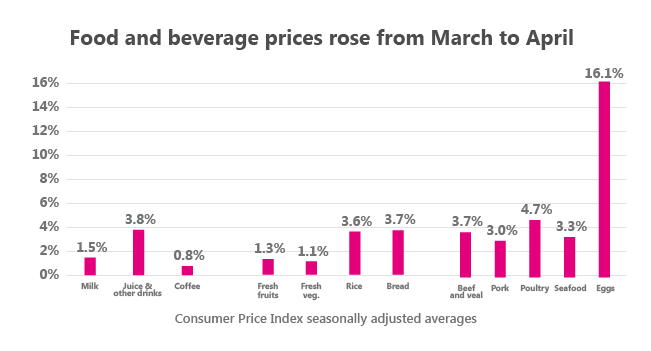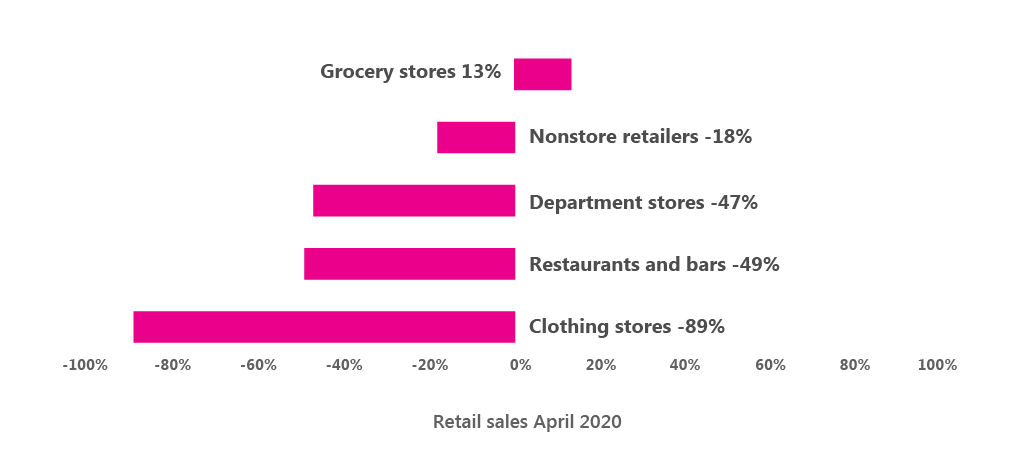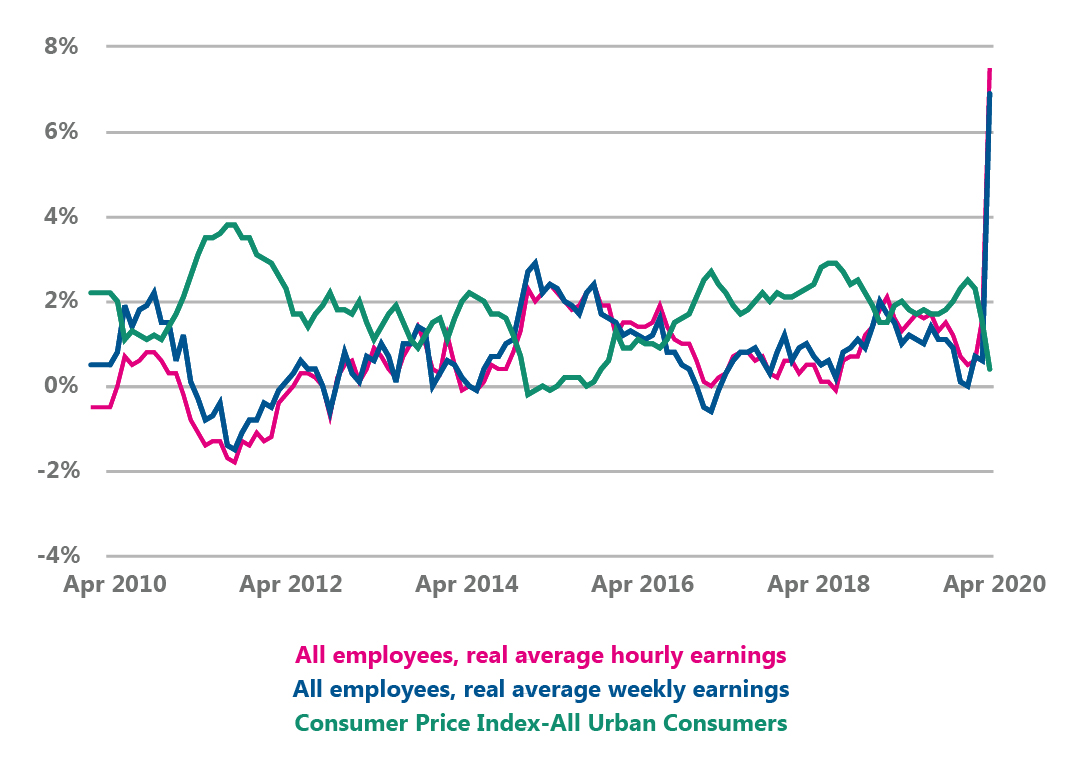At a time of record unemployment, Americans are paying more for food at the grocery store. In April, national prices for household food items rose 2.6% over March, according to the Bureau of Labor Statistics (BLS).
This 2.6% change in food is a seasonally adjusted average for a category called the BLS Consumer Price Index (CPI) calls “Food at Home.” It’s an overall measure for price fluctuations for items like milk and bread. This increase is in the midst of when people must cook at home and can’t as easily opt for restaurants due to state-mandated closures due to COVID-19.
The average price of goods overall declined 0.8%, but clearly not all categories experienced that decline.

Take the breakfast table, for example. Eggs had the biggest jump, with an increase of 16.1% in just one month. Cereal prices went up 2.9% from March to April. Milk went up 1.5%, juice went up 3.8%. For anyone wanting a side of toast, the cost of white bread rose 3.5%. The average cost of flour was up 1.3% over March, though butter was one of the few food items that dropped in price (down 1.3%).
Meat prices were up across the board, at a time when meat industry workers are contracting COVID-19 and plants are designated as critical infrastructure and ordered to stay open. Raw ground beef rose 3.7% over March prices, while fresh and frozen chicken parts were up 5.2%
Subscribe to get unbiased, data-driven insights sent to your inbox weekly.
The average middle-class family spends $580 a month on food. USAFacts analyzed the spending of the average American family in light of the CARES Act relief checks.
The majority of Americans were home-bound this spring. Prices for housecleaning supplies also rose in April, up 26%. Prices for paper products like paper towels and toilet paper, hard-to-get items as people stocked up for coronavirus, rose 4.5%.
April clothing sales down nearly 90% from a year prior

At this same time, prices for many other goods dropped. Most notably, overall gasoline prices fell 20.6% in April; they’ve declined 32.5% since December 2019.
The price index for all items not including food and energy fell 0.4% in April, the largest monthly decline since 1957. Here’s a sampling of price changes in major spending categories: apparel declined by 4.7%, electronics were down 0.5%, recreational equipment was down 1%. The Bureau of Economic Analysis reported that consumer spending was down 7.5% in March.
Amid this is the fact that the average hourly earnings is up 7.5%, reflecting loss of lower-paying jobs from the economy.
Percent change in real average hourly and weekly earnings for private sector employees (seasonally adjusted)

Though consumer spending is down this spring, most prices for essential food items are on the rise. With current unemployment benefits set to expire in July, it is unclear how Americans newly unemployed due to COVID-19 will afford some household staples.
Keep exploring
Page sources and methodology
All of the data on the page was sourced directly from government agencies. The analysis and final review was performed by USAFacts.
Bureau of Labor Statistics
Consumer Price Index
Bureau of Economic Analysis
Personal Income and Outlays: March 2020

